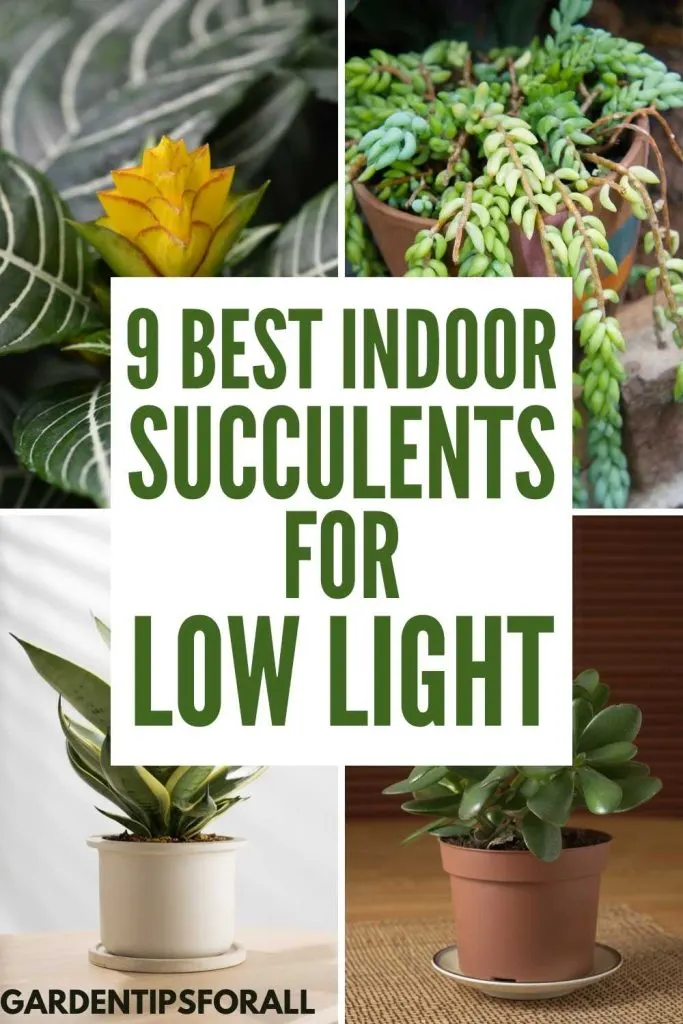Best Indoor Succulents for Low Light
In today’s article, we will be featuring some of the best low light indoor succulents.
When most people here in the United States think of succulent plants their minds travel to all those different varieties of cacti that grow in the desert with all that hot sun beating down on each plant.
While there are a number of succulent plants that flourish in full direct sunlight there are also several succulent plants that actually thrive in low light conditions.
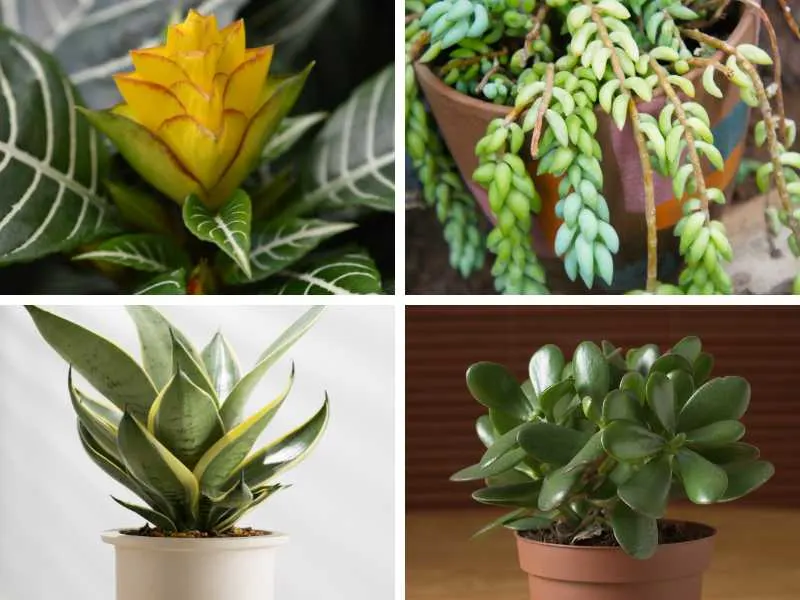
Related Article:
What Does Low Light Mean for Plants?
Many people really don’t understand what low light means when it comes to plants. Low light conditions for plants simply means the absence of direct sunlight. Therefore, low light can mean anything from plants that thrive in shade or partial shade to those plants that grow best in bright indirect sunlight.
The simple fact is, there are many plants including a number of succulents that actually prefer indirect sunlight to direct sunlight. Therefore, finding low light succulent plants is not as difficult as it may seem.
However, to make finding those succulent plants that prefer low light conditions as easy as possible we are presenting you with several of these plants for you to consider growing.
While all of the plants in this article can be grown indoors, most can also be grown outdoors in certain hardiness zones.
9 Amazing Low Light Indoor Succulents
#1. Jade Plant
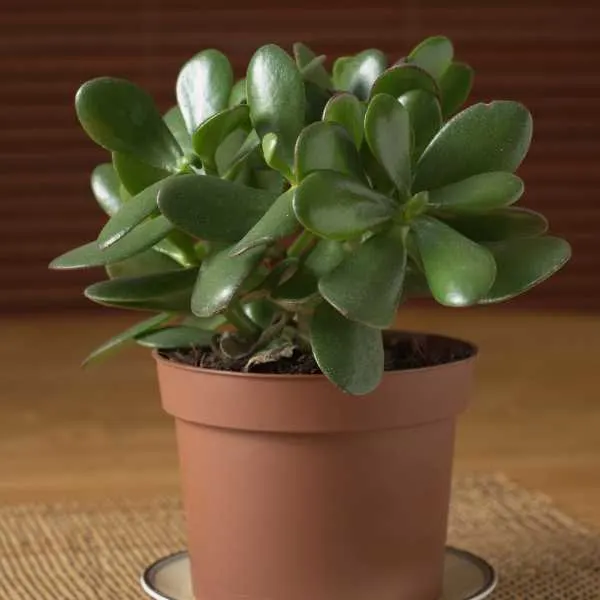
Native to South Africa the Jade Plant is a fairly easy plant to grow in your home. It is tolerant of both low light and low water conditions. These plants have thick woody stems and oval shaped glossy dark green leaves.
This plant is slow growing but eventually reaches a height of between 3 and 6 feet. Jade plants do need lots of indirect sunlight to grow their best and do best when placed near a south or west-facing window.
When this plant is grown out of doors it grows best in zones 11 and 12.
#2. Zebra Plant
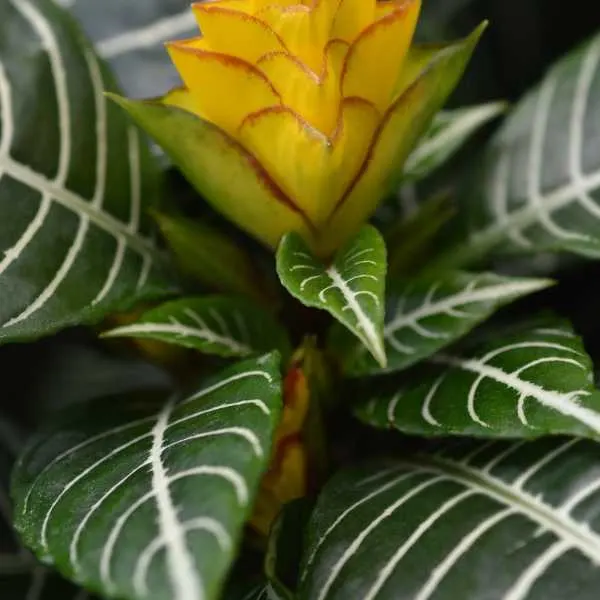
Zebra plants are native to South Africa and Brazil. These plants are slow growing although they will reach a height of 1 to 6 feet over time.
Zebra plants are known for their green leaves with white stripes and make great houseplants, as they require little maintenance.
The plant grows best when exposed to bright indirect sunlight and moist soil, enjoying 60 to 70 percent humidity. They can be grown out doors in zones 11 and 12.
#3. Ponytail Palm
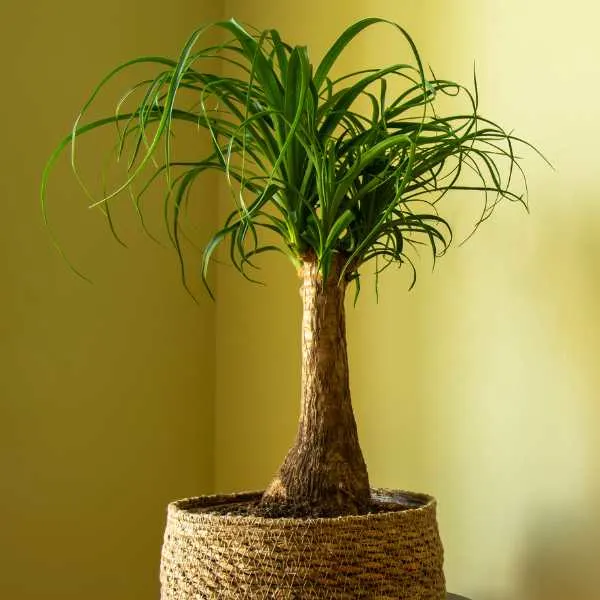
The Ponytail palm is native to Mexico and actually thrives well in low light conditions. This plant earns its name due to its long strap like leaves that look like ponytails.
This slow growing plant can grow up to 6 feet when grown indoors and does need to be pruned from time to time. You will need to keep the plant in a room with temperatures of at least 60 degrees Fahrenheit.
When grown out of doors the Ponytail plant needs to be grown in hardiness zones 10 and/or 11.
#4. ZZ Plant
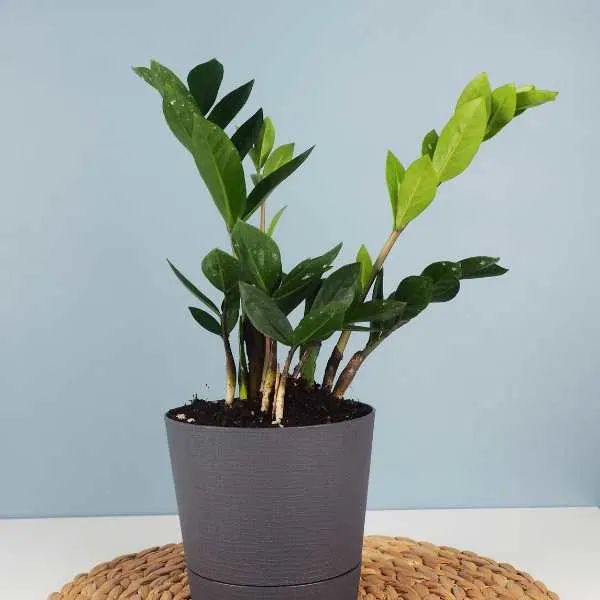
ZZ plants are drought tolerant plants native to Africa. These plants grow up to 2 feet tall and have long glossy deep green leaves that are oval in shape. They grow upward and thrive in the low light conditions of bright indirect sunlight and don’t tolerate cold temperatures.
This plant is toxic to humans and animals and can be grown outdoors in hardiness zones 9 and/or 10. When grown indoors the leaves of this plant can become dusty. To remove dust gently wipe the dusty leaves with a damp cloth.
#5. Panda Plant
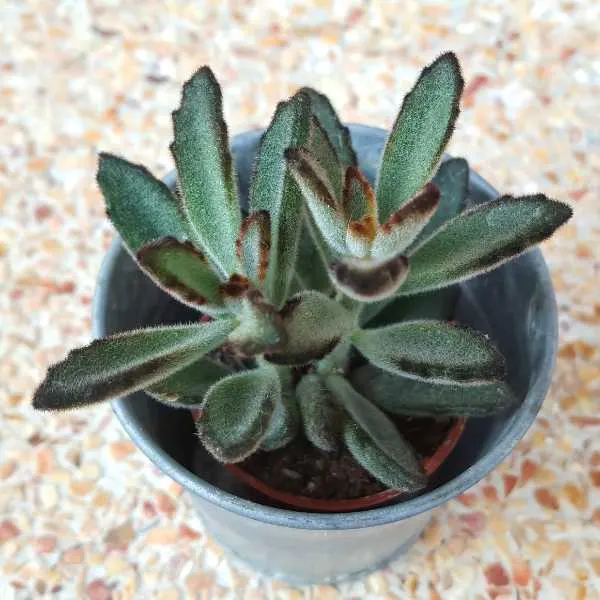
The Panda plant is one of the best plants to grow in low light conditions. In the United States this plant is best grown indoors.
The Panda plant is a unique plant that is fuzzy with thick blue/green leaves with black dots. The thick leaves hold water allowing the plant to thrive in drought conditions.
This plant thrives in normal humidity and can tolerate dry air. They grow up to 18 inches tall and only require watering about once a week. It is toxic to pets so keep it out of the reach of dogs and cats.
#6. Burro’s Tail

Native to Mexico the Burro’s tail plant is named for its dangling leaves that look a bit like a donkey’s tail. This plants tail of leaves are tear drop shaped and blue green in color. The tails of this plant can reach 4 feet in length over time.
While this plant loves sun, it needs to be shaded from the bright afternoon sun that can burn the plant.
This plant is drought tolerant and extremely sensitive to over watering. When Burro’s tail is grown outdoors the plant thrives in hardiness zones 10 and 11 and can produce red or pink flowers.
#7. Blue Chalksticks
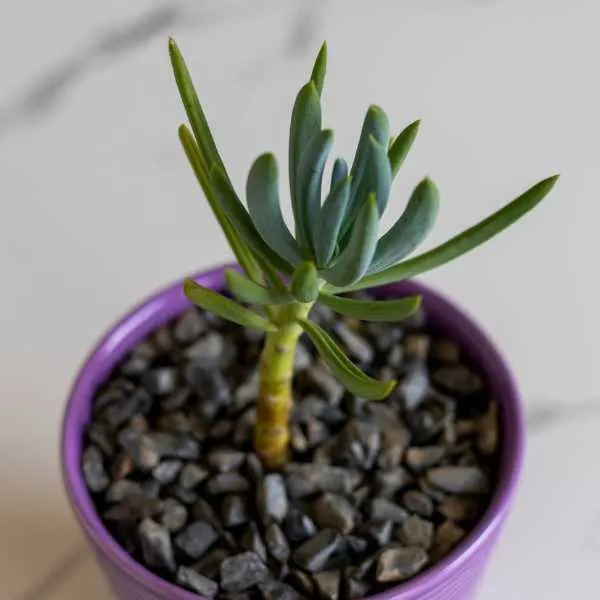
The Blue Chalksticks also known as Senecio Serpens is native to South Africa. This plant is dormant during the summer months and grows during the winter. It is a low maintenance plant with powdery blue/green foliage and does well in full sunlight or low light conditions.
This plant grows well outside as well as, making for an attractive houseplant.
When grown outside Blue Chalksticks can reach a height of 1 to 2 feet tall and is attractive to butterflies. It grows best in zones 9 through 11.
#8. Snake Plant

The Snake Plant is a low light succulent plant that we have discussed in previous articles like this one about windowless bathroom plants. This interesting plant has sword like shaped leaves that grow straight up. The leaves often come in variegated shades of green and yellow.
These plants are ideal plants to grow in your bedroom since they filter the air, remove toxins and converts carbon dioxide to oxygen.
This plant can grow anywhere in height from 6 inches to 8 feet tall and does well in low light conditions from shade to partial indirect sunlight. The Snake plant grows outside in zones 9 through 11. It is native to Asia and South Africa.
#9. Aloe Vera
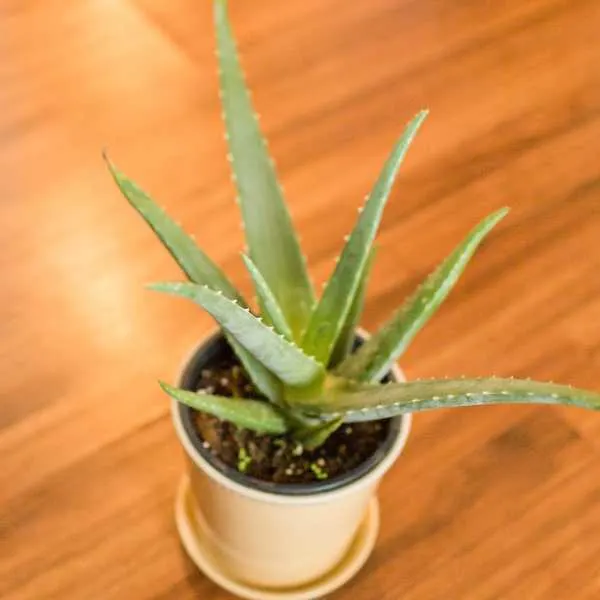
The Aloe Vera plant is another succulent plant we have discussed in other articles. This plant can easily tolerate low light conditions. It is known for its thick fleshy bright green leaves that store water.
This plant is also known for its healing qualities as the gel from the plant is used topically for burns, cuts and scrapes. When grown outdoors this plant does well when planted in zones 10 or 11.
Final Thoughts on Best Low Light Indoor Succulent Plants
There are several more low light succulents for indoors, but the above plants are both popular and easy to care for.
